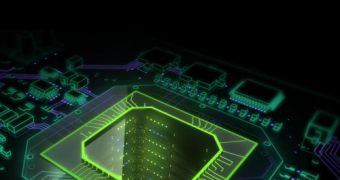Since it has, more or less, already seen to the needs of the consumer and professional markets, NVIDIA is now saying its piece on the HPC front as well, apparently even being set on powering supercomputers with performance levels of several PetaFLOPS.
As consumers probably know, NVIDIA has several lines of products based on graphics processing units, each aimed for a specific market segment.
The GeForce series is, of course, the one intended for consumers and, thus, the one most covered by the media.
There is also the Quadro series of video cards, aimed at professionals and optimized for various applications that need high amounts of VRAM.
Now, NVIDIA has changed the tune somewhat and shifted its gaze towards the supercomputer industry, where it expects its Tesla GPU computing modules to cause waves.
One of the two largest HPC GPU deployments is the Nebulae supercomputer, which has 4640 Tesla C2050 cards.
The other one HPC GPU deployments are the Tianhe-1, equipped with 2560 dual-chip ATI Radeon HD 4870 X2 cards (5120 GPUs).
Now, the Santa Clara, California-based company went as far as saying, according to InsideHPC.com, that a great number of PetaFLOPS-capable HPC applications will use the Tesla.
"We are going to have a full series of PetaFLOP computers. Soon there will be more PetaFLOP-class computers outside the U.S. than there are inside the U.S.,” said Andy Keane, general manager of Tesla business at Nvidia, reports InsideHPC.com web-site.
“So, for me that was a worrisome trend because here you have a clear technology advantage that provides a lot of benefit," Keane added.
An interesting fact is that supercomputers with ExaFLOPS performance may turn out to be too power hungry is made of only x86 processors.
This means that makers of such installations will be quite eager to experiment with hybrid chips or other non-x86 products.

 14 DAY TRIAL //
14 DAY TRIAL //